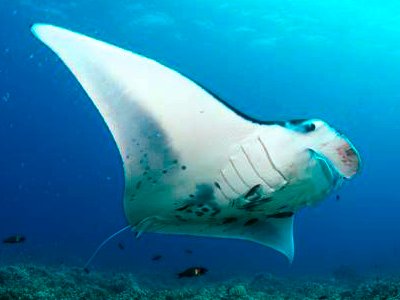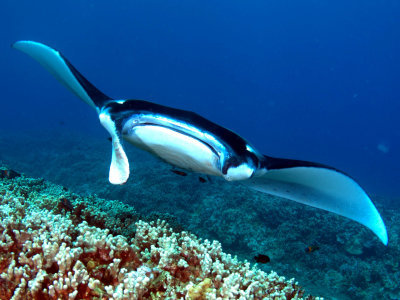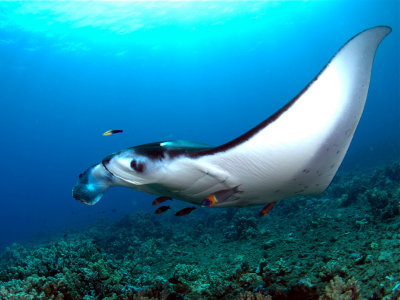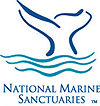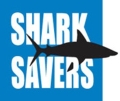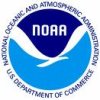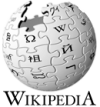
Manta birostris, largest of rays, have wing spans over 25 feet (7.6m). They are sometimes called "gentle giants", since they filter-feed, inhaling plankton and fish larvae, and they have no venomous spines. Cleaner fish are safe to swim in and around them, feeding off dead skin and cleaning their gills. Reef divers can get great closeup shots of these graceful curious creatures. These manta images were taken near Ukumehame, Maui, Hawaii and are in our gallery of manta images.
|
The best way to identify mantas is by the markings around their bellies and gills. The colors of their cephalic fins (near their mouth) and the back of their wings are also helpful in distinguishing between them. Some have been marked for observation with a tag on the top of their wings. This species has a larger "migratory" and a smaller "local" manta that makes it's home in one area - the one's you can come back and visit in the same spot.
Conservation...
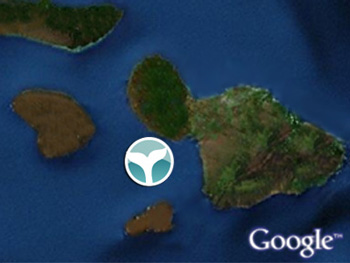
Ukumehame dive site - Maui
|
Threats to mantas include sharks and whales, particularly orcas, and humans. Although not currently listed as endangered, threats to their habitats will deplete their food supplies, forcing them to migrate. With advances in technology, Indonesian fisherman have increased their catch of 200-300 mantas per year to 1,000-2,400 per year. According to the
Manta Pacific Research Foundation, thousands of rays are killed in Indonesia, the Philipines, and Mexico to be sold for food, traditional Chinese medicines, and skins. There are also large commercial aquariums interested in buying them for display.
The good news is, people are becoming educated and governments are stepping up to protect the species. Mantas were included in the
Fisheries Administrative Order 193 in 1998, which had been originally drafted to ban killing and sale of whale sharks. In January of 2009, the Governor of Hawaii signed Act 92, protecting mantas within state waters. Communities are educating local, national and international authorities of the importance of protecting all species, before becoming endangered. You can help too! Learn more by visiting the resource links below.
|
Search the Image Database...
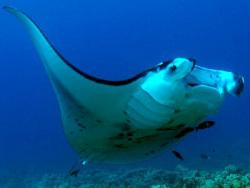
View Manta Ray Gallery
|
|
Our image database has a growing collection of images from around the world contributed by folks like you. We currently have records of several different types of rays. You may search our image database for plants and animals that interest you.
You could also create an account to share your own images. Our main purpose is to track marine life via digital imagery. We are also dedicated to education and sharing information related to coastal and ocean habitats and inhabitants.
|
|
